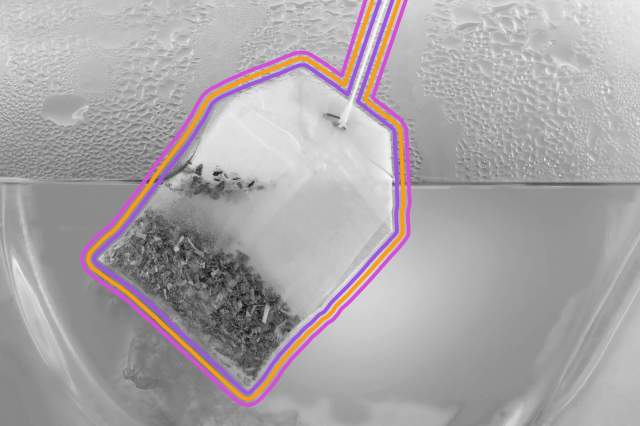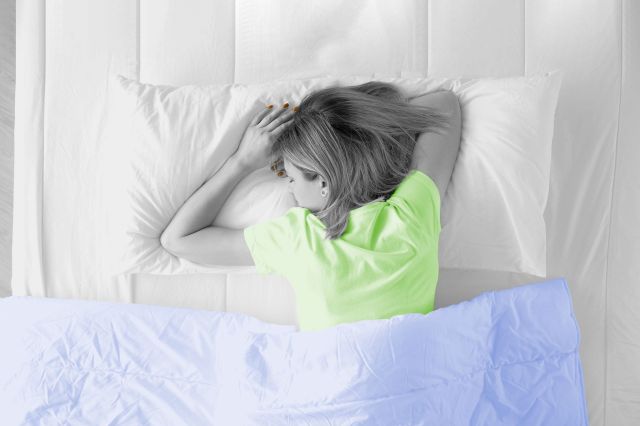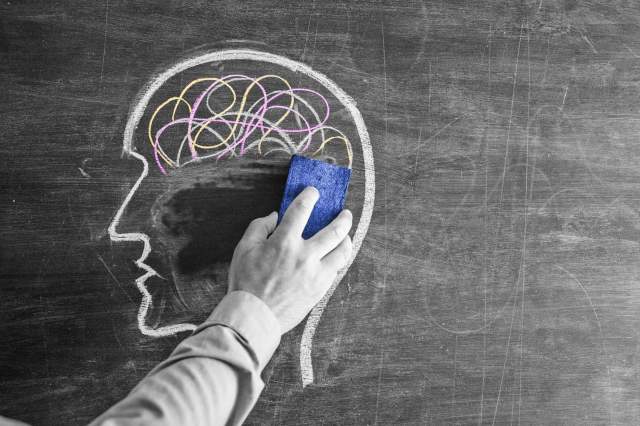Sip On These 7 Facts About Tea
Original photo by zeljkosantrac/ iStock

Besides water, no beverage is consumed by more individuals across the globe than tea. For millennia, this beloved drink has been favored by many cultures, from those in China who first cultivated tea to modern customers in quaint cafés. Here are seven refreshing facts about tea for those who want a dash of history and culture with their drink.

Tea Bags Were Popularized by Accident
Before individual tea bags came into wide use, it was more common to make an entire pot of tea at once by pouring hot water over tea leaves and then using a strainer. In 1901, Wisconsin inventors Roberta C. Lawson and Mary Molaren filed a patent for a “tea leaf holder,” a concept that resembles the tea bags we use today. It wasn’t until about seven years later, however, that another individual inadvertently helped popularize the concept of tea bags — at least according to legend. Around 1908, American tea importer Thomas Sullivan reportedly sent samples of tea inside small silken bags to his customers. His clients failed to remove the tea leaves from the bags as Sullivan assumed they would, and soon Sullivan realized that he’d stumbled onto an exciting new concept for tea brewing. He later reimagined the bags using gauze, and eventually paper.
Tea bags were booming in popularity throughout the United States by the 1920s, but it took a while for residents of the United Kingdom to adopt the concept. In fact, tea bags wouldn’t make their way to the U.K. until 1952, when Lipton patented its “flo-thru” bag, but even then the British weren’t keen to change their tea-brewing ways. By 1968, only 3% of tea brewed in the U.K. was done so using tea bags, with that number rising to 12.5% in 1971. By the end of the 20th century, however, 96% of U.K. tea was brewed with bags.

The British Have Their Own Official Standard for the Perfect Cup of Tea
The British are serious about tea. So much so that British Standards — a national body that produces technical specifications for products and services — released an edict in 1980 on the official British guidelines for making the perfect cup of tea. Though some may disagree with the standard, the rules include the following: Use a porcelain pot and a ratio of two grams of tea per every 100 ml of water, brew for six minutes, maintain a temperature of 60 to 85 degrees Celsius (140 to 185 degrees Fahrenheit) when serving the tea, and add milk to the mug first if using tea that’s already been steeped.

Herbal Tea Isn’t Actually Tea
This may be a shocking revelation, but herbal “teas” like chamomile and peppermint aren’t officially teas at all. In order for a drink to be classified as tea, it must come from the Camellia sinensis plant, from which many white, green, oolong, and black teas do. Herbal teas, however, are known as tisanes, or more plainly infusions that incorporate various leaves, fruits, barks, roots, flowers, and other edible non-tea plants. So while the experience of drinking a minty tea may be indecipherable from drinking a warm cup of green tea, the two beverages fall into completely different categories from a scientific gastronomic perspective.

The World’s Largest Tea Bag Was 551 Pounds
Saudi Arabia is the site of at least two notable tea records. On September 20, 2014, in Jeddah, Saudi Arabia, the owner of a company called Rabea Tea unveiled a record-setting tea bag weighing 551 pounds and 2.56 ounces, earning it the distinction of being world’s largest tea bag. Eight years later, also in Saudi Arabia, a company called Triple Nine Tea set the record for brewing the largest cup of hot tea — 11,604.28 gallons.
When it comes to the largest cup of iced tea, however, the achievement is proudly held in the American South. On June 10, 2016, the residents of Summerville, South Carolina, banded together to create the biggest jug of sweet tea ever made (2,524 gallons), using 210 pounds of loose leaf tea, 1,700 pounds of sugar, and over 300 pounds of ice.

Besides Boston, Several Other U.S. Cities Held “Tea Parties”
While most Americans are familiar with the Boston Tea Party — in which colonists dumped chests of British East India Company tea into Boston Harbor as a protest against “taxation without representation” — fewer are aware that many similar events took place along the Eastern Seaboard in the months that followed. Just nine days after the protest in Boston, the Philadelphia Tea Party occurred on December 25, 1773. Although no tea was destroyed as in the Boston protest, a ship carrying a large cargo of tea was refused on its way to Philadelphia, and the captain — under the threat of being tarred and feathered — returned both ship and cargo to England.
The following year saw even more “tea parties,” including the Charleston Tea Party in November 1774, in which the captain of a tea-toting ship feigned ignorance about his cargo but was ultimately forced to dump the ship’s contents into the harbor. Additional protests took place in New York; Annapolis, Maryland; Wilmington, North Carolina; Greenwich, New Jersey; and other American cities. Though none went down in history to the degree of the Boston Tea Party, they were all critical acts of rebellion — against taxation and ultimately British rule — that contributed to the start of the American Revolutionary War.

Turkey Consumes the Most Tea per Capita of Any Country
Though no country consumes more tea than China overall – 1.6 billion pounds each year — there are several other nations whose tea-drinking numbers are even more staggering when broken down per capita. At the top of that list is Turkey, as each tea-loving Turk consumes around seven pounds of tea annually, compared to just 1.25 pounds per Chinese citizen (as of 2014).
Turkish individuals are particularly fond of black tea, and they average three to five cups per day, which comes out to a staggering 1,300 cups per year, give or take. Though they’ve already set the record, tea drinking was also on the rise in Turkey during the COVID-19 pandemic. The Turks are so proud of tea as a foundation of their culture that in 2020, the country petitioned UNESCO to add Turkish tea to the organization’s Intangible Cultural Heritage List. After Turkey, Ireland finishes second on the list of tea-drinking countries per capita, with the United Kingdom coming in third.

Cheese-Topped Tea Is Popular in Asia
Though the combination of cheese and tea may sound somewhat incompatible, it’s a beloved and delicious beverage that has grown in popularity throughout Asia over the last decade or so. Cheese tea is made as a cold beverage using green or black tea, and is topped with a layer of milk and cheese that’s then sprinkled with salt. The drink is a relatively new invention, having originated around 2010 at nighttime drink stalls on the streets of Taiwan, though it’s since boomed in popularity throughout Hong Kong, Singapore, Malaysia, Japan, and China.
Asia isn’t alone, however, when it comes to incorporating cheese into their caffeinated beverages. Though it’s not tea, a Scandinavian coffee drink called Kaffeost features cubes of dried cheese soaking up the liquid inside a mug of hot coffee. And in Colombia, locals add savory globs of melted cheese to a regional hot chocolate known as chocolate santafereño.

Bennett Kleinman is a New York City-based staff writer for Optimism Media, and previously contributed to television programs such as "Late Show With David Letterman" and "Impractical Jokers." Bennett is also a devoted New York Yankees and New Jersey Devils fan, and thinks plain seltzer is the best drink ever invented.
top picks from the optimism network
Interesting Facts is part of Optimism, which publishes content that uplifts, informs, and inspires.























































































